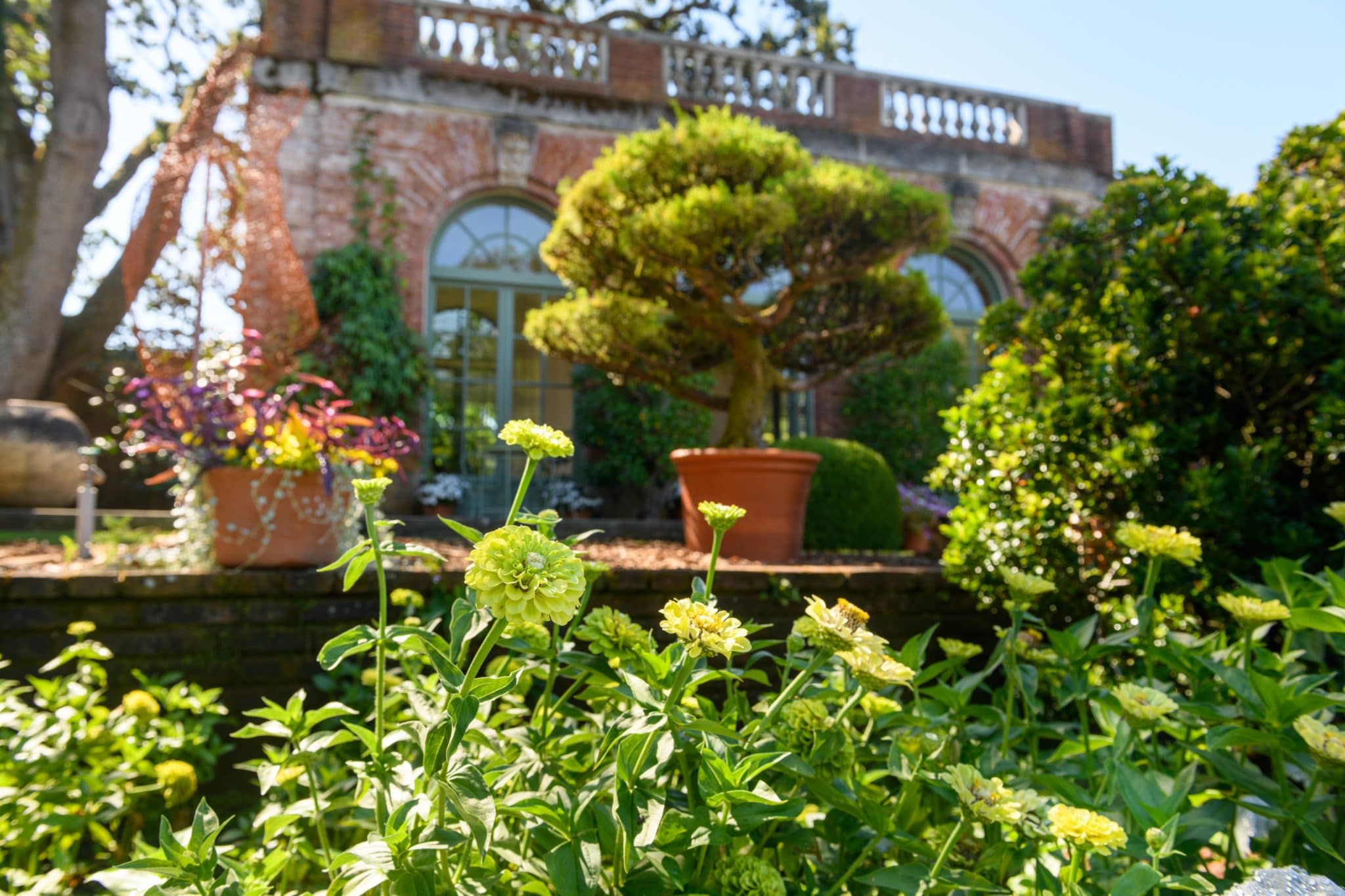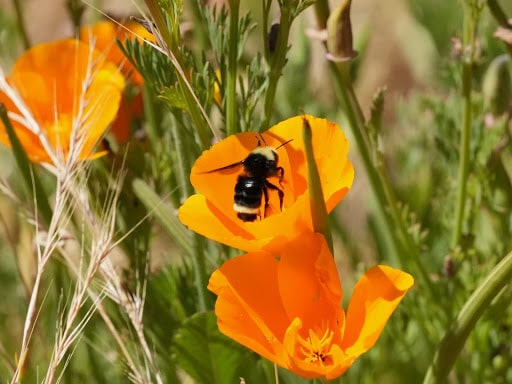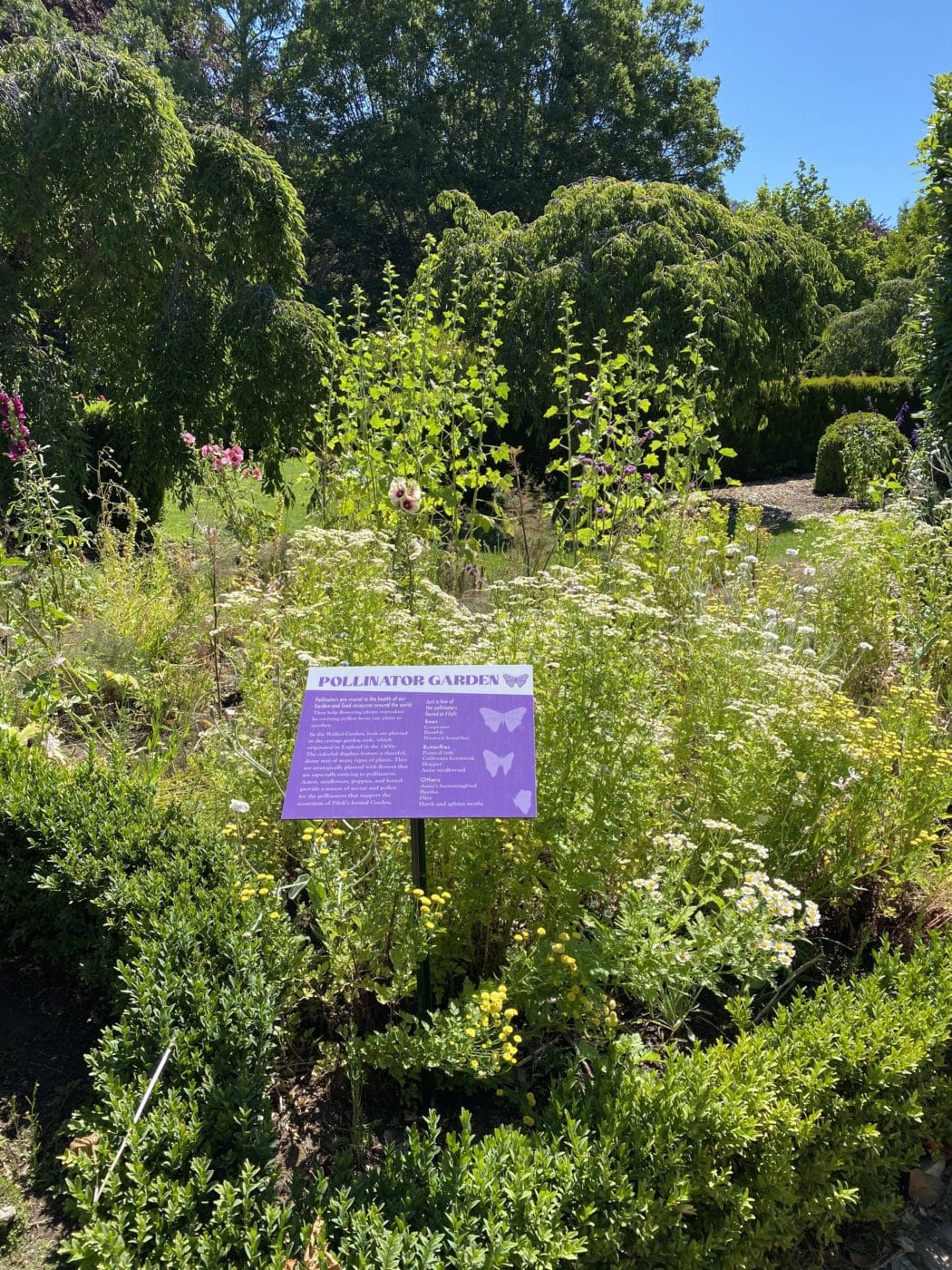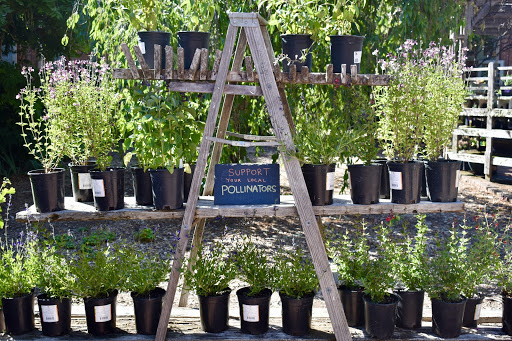Pollinators at Filoli

This summer, Filoli’s Fruitful Garden exhibit highlights the gifts of edible, medicinal, and pollinator plants with a vibrant display of fruits, vegetables, and herbs. To celebrate Pollinator Week (June 21-27, 2021), Plant Records Specialist John Chau has some tips about how to make your garden pollinator-friendly.

Animal pollinators — including bees, butterflies, moths, beetles, flies, birds, and bats — are vital partners for more than 75% of plant species, including most of the vegetables and fruits we eat. This is a mutually beneficial relationship, with plants achieving pollination that allows them to successfully reproduce and animals getting food in the form of nectar and pollen. Worldwide, many pollinator populations are in decline, in large part because of the loss of habitat and the plants they need to live.

At Filoli, we are showcasing this important relationship in our summer display of pollinator-friendly plants. Many beautiful and edible garden plants are also attractive to pollinators, including sunflower, aster, sage, rosemary, lavender, and fennel. You can find these plants currently flowering throughout the Garden.
Pollinators commonly seen at Filoli include honeybees, bumblebees, carpenter bees, other small native bees, Anna’s hummingbirds, and butterflies like the painted lady, variable checkerspot, and fiery skipper.
The pollinators help our flowers to set seed, which we then collect to plant future years’ displays. When you visit Filoli, take a pause in an area busy with pollinator activity, and see how many different animals you can spot and what plants they are visiting.
To help pollinators in your own garden, there are some simple steps you can take.
- Use whatever space you have, be it a window box, patio pot, or garden, to plant flowers that are pollinator-friendly, like rosemary, lavender, oregano, parsley, zinnia, cosmos, and sunflower.
- Plant in larger groups, which are more visible and efficient for pollinators, and try to have a variety of plants so something is in flower throughout the year.
- Consider using native species when possible.
- Avoid using pesticides on your plants, which can harm pollinators that visit.
- Use natural pest control methods instead, like encouraging natural enemies of pests and using traps and barriers to exclude pests.
- Leave some spaces in your yard more natural – unpruned and unmulched – to provide areas for pollinators to make nests, which are often underground or in branches.
- Learn more about different pollinators and the lives they lead. One good resource is the Pollinator Partnership (https://www.pollinator.org/).
With these simple actions, we can all contribute to helping the pollinators and plants in our communities thrive.

